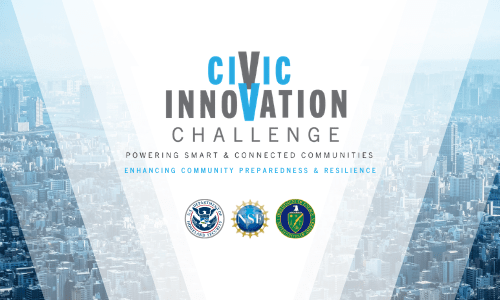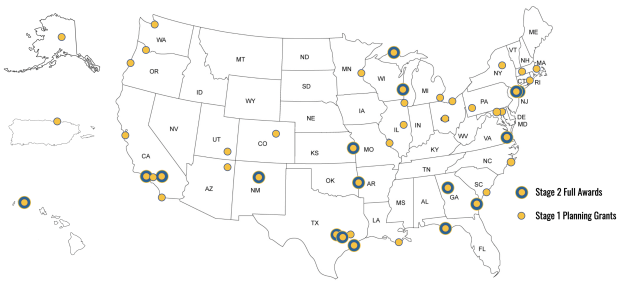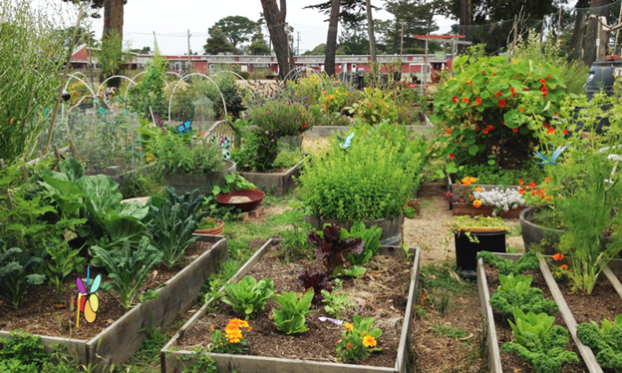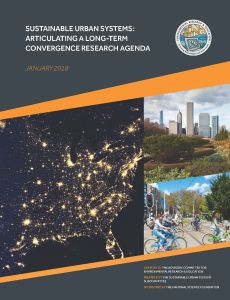Advancing scientific understanding of 21st century communities

Credit: Diego DelsoCreative Commons
The National Science Foundation (NSF) is investing in a portfolio of interdisciplinary and convergent activities to advance fundamental knowledge about the connectivity and diverse changes in 21st century communities to help the nation and the world address the challenges and seize the tremendous opportunities of these communities. Key questions may include:
- How can science improve forecasts and make predictions about the future states of rural, suburban, and urban systems?
- What theories explain the structure and function of communities in the 21st Century and what are the critical drivers of change?
- What aspects and intersections of social, built, and natural systems influence the resilience and sustainability of communities and the well-being of the people living in them?
- How can successful innovations in one community be transferred to others?
- How can integrative research along with community engagement improve the quality of life in communities?
Civic Innovation Challenge (CIVIC)
CIVIC Innovation Challenge is a joint program of NSF, the US Department of Energy Connected Vehicle Technologies Program, and US Department of Homeland Security Science & Technology Directorate.
CIVIC is organized as a two-stage competition with two tracks centered around the following topic areas:
Track A. Communities and Mobility: Offering Better Mobility Options to Solve the Spatial Mismatch Between Housing Affordability and Jobs; and
Track B. Resilience to Natural Disasters: Equipping Communities for Greater Preparedness and Resilience to Natural Disasters.
In Stage 1, up to 12 awards per track will be made for Planning Grants – each with a budget of up to $50,000 for four months to undertake pre-development activities, including solidifying the team, maturing the project plans, and preparing to submit a well-developed full proposal for Stage 2. In the second stage (Stage 2), up to four teams per track will be selected from Stage 1 award recipients to receive a full award - each with a budget of up to $1,000,000 for up to 12 months. Only awardees of Stage 1 will be eligible to submit proposals for Stage 2. CIVIC differs from the S&CC program in important ways. First, it strongly encourages co-creation of research concept by the community and researchers. Second, it operates on a very accelerated time scale. While S&CC anticipates research impacts after 3-4 years, CIVIC seeks to co-create research innovations and demonstrate significant community impact potential by the end of stage 2.
Throughout both stages, MetroLab Network will foster "communities of practice" through in-person and web-based activities, as part of a NSF-funded project. These activities will be aimed at enhancing the teams' capacity-building, networking, impact, and ability to create methods and solutions transferable to other communities.
Website:
https://nsfcivicinnovation.org/
Press Release:Toward Smarter Communities: Federal Agencies Partner on a Research and Action Competition


Credit: NSF
Coastlines and Reople (CoPe)

Credit: Erik Jepsen/UC San Diego
Coastlines and People (CoPe) is an emerging interest area focused on geophysical (atmospheric, geological, hydrological, oceanographic) processes and hazards that impact both the physical coastlines and the people that inhabit coastal areas. While coastal communities vary extensively, most of the world's largest cities are coastal and the amount of urban infrastructure built along coastlines continues to grow. The new CoPe solicitation supports Coastal Research Hubs, structured using a convergent science approach, at the nexus of coastal sustainability, human dimensions, and coastal processes to transform understanding of interactions among natural, human-built, and social systems in populated coastal environments. Research Hubs will address issues operating at multiple scales and link science, stakeholder engagement, and education into developing pathways to sustainability in changing coastal environments.
Objectives of the CoPe program are to:
- Conduct basic research focused on understanding the impacts of coastal environmental variability and hazards on populated coastal regions.
- Support research and activities in a hub-based environment, where the whole is greater than the sum of the parts.
- Support potentially ground-breaking investigations on Coastlines and People that cross disciplines, involve stakeholders and local communities, and integrate broadening participation into the values of all activities and research the hub undertakes.
- Foster fundamental coastal science and engineering that is societally relevant.
- Provide a framework where multiple institutions and constituencies can easily work together on scientific questions relevant to all.
- Serve as an exemplary program for integrated Earth-system processes.
Websites:
2018 Community Workshops: Coastlines and People
NSF 20-567: Coastlines and People Hubs for Research and Broadening Participation (CoPe)
FAQs: https://www.nsf.gov/pubs/2020/nsf20078/nsf20078.jsp?org=MPS
Long Term Ecological Research - Urban Ecology
The NSF established the Long Term Ecological Research (LTER) program in 1980 to study ecological phenomena over long periods of time. The LTER network consists of 28 long-term research sites. Together, these sites have produced data on ecological, social, and economic processes for several decades. While all LTER sites interact with communities of various scales, two sites, the Central Arizona - Phoenix LTER and the Baltimore Ecosystem Study LTER, are specifically focused on Urban Ecology. Both were established in 1997. Competition for a new urban LTER site was launched in 2019. The North Temperate Lakes LTER, established in 1981, is devoted to the study of lakes and includes Lake Mendota which is located in the heart of Madison, WI. NSF has long required that data collected by LTER sites be made broadly available to scientists, educators, and the public to ensure these long-term investments empower interested parties beyond the scientists directly supported by LTER. These data are accessible through the Environmental Data Initiative and other public data repositories. For more information on LTER network activities and for links to individual LTER site web pages, visit the LTER Network webpage.
Websites:
Long-Term Ecological Research Program
Environmental Data Initiative
LTER Network

Credit: Ben Duchac/Creative Commons
Smart and Connected Communities

Credit: University of California
The goal of the S&CC program is to accelerate the creation of the scientific and engineering foundations that will enable smart and connected communities to bring about new levels of economic opportunity and growth, safety and security, health and wellness, and overall quality of life. S&CC supports integrative research that addresses fundamental technological and social science dimensions of smart and connected communities, and pilot solutions together with communities, through meaningful engagement with the community throughout the project.
A 'smart and connected community' is a community that synergistically integrates intelligent technologies with the natural and built environments (including infrastructure) to improve the social, economic, and environmental well-being of those who live, work, or travel within it. The S&CC program intentionally takes a broad view on "community." Communities are defined as having geographically-delineated boundaries - such as towns, cities, counties, neighborhoods, community districts, rural areas, and tribal regions - consisting of various populations, with the structure and ability to engage in meaningful ways with proposed research activities. While many S&CC projects are focused in urban areas, this program also supports projects focused on other types of communities - including rural communities and tribal regions.
This program was launched in 2016 and has issued 51 awards through Fiscal Year (FY) 2018. S&CC's Integrative Research grants have ranged in size from $0.8 to $3.6 million and currently support research projects that integrate across both the technological and social dimensions of smart and connected communities and meaningfully engage participating community stakeholders. S&CC's portfolio also includes Research Coordination Networks and planning grants.
Websites:
Smart and Connected Communities Program
NSF's Smart and Connected Communities Effort
Press Releases:
October 4, 2018: NSF announces $24.2 million to support research fueling smart cities and communities
October 12, 2017: NSF announces $19.5M in awards to support fundamental research to advance the nation's local cities and communities
Sustainable Regional Systems (SRS)
Urban systems are dependent on rural systems for the provisioning of food, energy, water, and other materials, while rural systems are dependent on urban systems for markets for these provisions and other services such as specialized healthcare. In turn, both systems are connected by biotic and ecological processes that influence and are influenced by human behavior. The goal of SRS is to fund convergent research and education that will advance sustainable regional systems science and engineering to facilitate the transformation of current regional systems to enhance sustainability.
In response to NSF's Advisory Committee for Environmental Research and Education (AC ERE) 2018 report titled Sustainable Urban Systems: Articulating a Long-Term Convergence Research Agenda, the NSF is called for workshop proposals to explore concepts of Sustainable Urban System Research Networks. Based on the findings of the AC ERE report and workshops, a compelling vision and research agenda was developed for Sustainable Regional Systems (SRS) science, engineering and education. In FY 2019, the NSF supported 27 workshops that explored concepts for potential Sustainable Regional Systems Research Networks The AC ERE's report and SUS workshops articulate a vision and a compelling research agenda for developing the next generation of sustainable urban systems (SUS) science that includes:
- Developing new data and methods to understand the interactions among natural, built, and social, behavioral, and economic systems in regional areas;
- Advancing comparative, typology, and scalability studies to develop generalizable theories of regional systems;
- Co-producing knowledge through engagement with communities and stakeholders and by leveraging real-world experimentation ongoing in regional areas; and
- Developing the science model and make predictions about the future of sustainable regional systems.
Prior Research Network competitions have resulted in several $12 million awards. Next-generation SRS Research Networks of comparable-size should enable broader, more extensive, and more comprehensive SRS research and education than is currently possible elsewhere in NSF's portfolio.
Websites:
- Sustainable Urban Systems Conference and Workshop Awards
- Dear Colleague Letter (NSF 19-032): Conference Proposals on Concepts for Advancing Sustainable Urban Systems (SUS) Research Networks
- Press Release for AC ERE Report: https://www.nsf.gov/news/news_summ.jsp?cntn_id=244179
- SRS Solicitation: https://nsf.gov/funding/pgm_summ.jsp?pims_id=505707&org=NSF
Together these programs will significantly advance scientific understanding of 21st century communities by advancing understanding of technologies and the impacts of geophysical and other hazards on various scales of communities.
Researchers seeking to submit a proposal are encouraged to read the available solicitations and/or Dear Colleague Letters to determine which opportunity best fits their idea. If uncertain about where a specific research idea would best fit, researchers are encouraged to email one of the points of contact listed in the solicitations and DCLs.
Additional opportunities
The science and engineering of community systems also is supported by NSF's core programs, including but not limited to:
Civil Infrastructure Systems
Cultural Anthropology
Cyber-Physical Systems
Decision, Risk, and Management Sciences
Dynamics of Integrated Socio-Environmental Systems (Dises)
Engineering for Civil Infrastructure
Environmental Sustainability
Human-Environment and Geographical Sciences Program (HEGS)
Humans, Disasters, and the Built Environment
Navigating the New Arctic
Sociology


